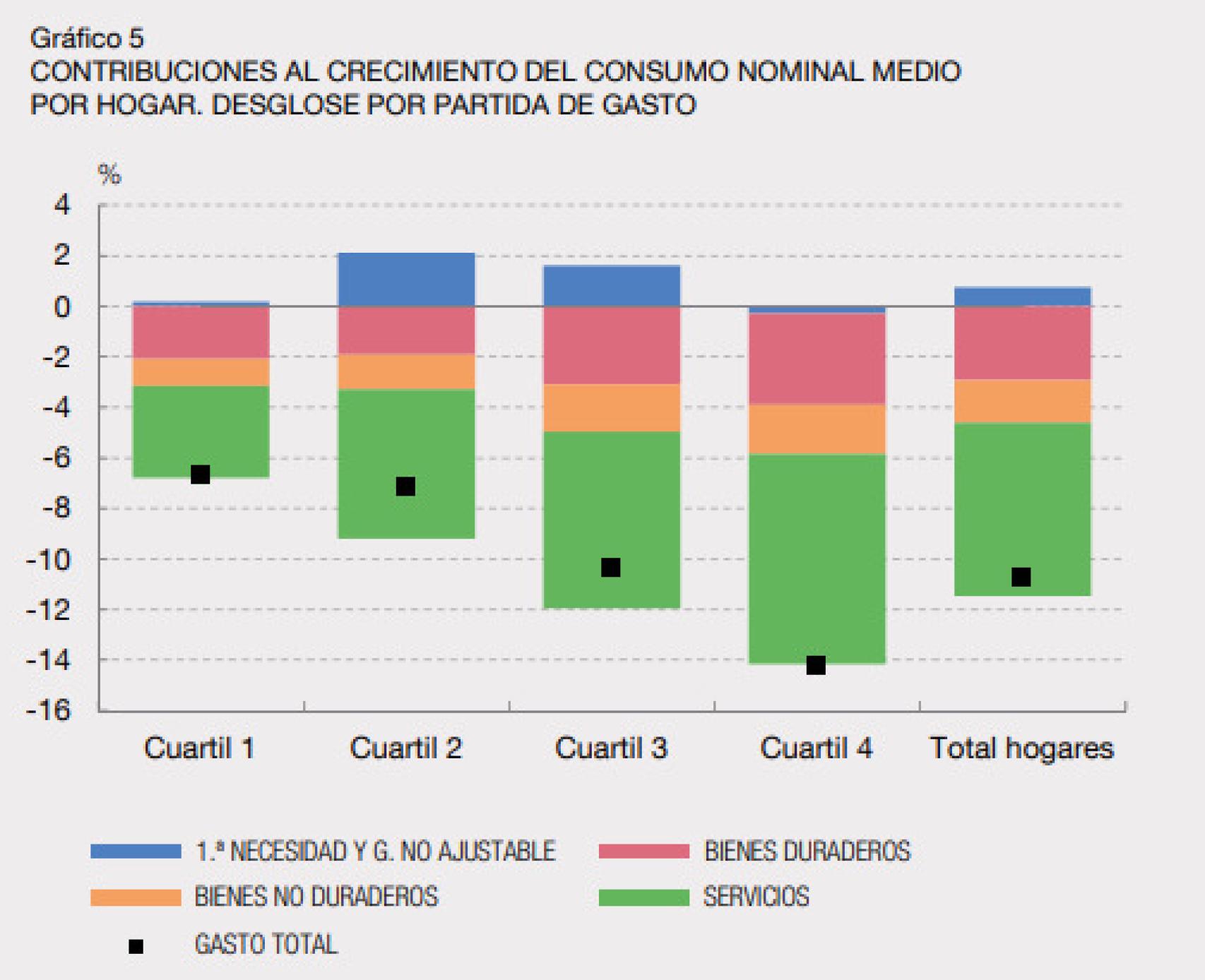Related news
The Vice President of the Government, Nadia Calvin, promised on Tuesday a “rapid” economic recovery based on the consumption of Spaniards who, according to their calculations, accumulate a 50,000 million dammed savings euros for spending that they could not do in the worst moments of the restrictions. This optimism about the purchase decisions that households will make in the coming months collides with the scenario that the economists of the Bank of Spain (BdE) also drew on September 21.
In the latest Economic Bulletin, the BdE is much more cautious with the destination of these savings and the vigor of the recovery. And in addition, it sends a message to the Government: the fear of raising taxes would be making families save more at a time when the Spanish economy could use more dynamism.
“Households could decide to limit their spending levels in anticipation that the high volume of public debt accumulated with the crisis will lead to a future tax increase“, says the Bank of Spain in its latest report. Its economists acknowledge that” the available evidence about the existence of this channel is not conclusive “, but they consider it pertinent to send this reminder in their quarterly analysis of the Spanish economy.
The Government will present in one or two weeks the General State Budgets (PGE) that will allow a better glimpse of the fiscal horizon that awaits the Spanish. Although it is expected that there will not be strong tax increases in 2022, the European Commission is expecting a tax reform for 2023 that the Executive will have to present next year.
This situation of fiscal uncertainty given the evidence that it will be necessary to finance Spanish public debt -which will remain above 114% of GDP in 2023- it doesn’t seem like a catalyst for recovery.
However, the Government does trust that the Spanish have confidence in the economy and accelerate their spending decisions now that the Complete vaccination already reaches about 80% of the population.
With the indicators managed by the Ministry of Economy, the growth of private consumption has been rebounding this summer with 7.3% in July and 8% in September.
Calviño highlighted this Tuesday that private spending took off in the second quarter of the year, benefiting especially the service sectors most affected by the pandemic.
However, according to the Bank of Spain, GDP recovery between April and June was higher than expected and in the third quarter it would be moderating to reach 2.7% (one tenth less than in the previous one), which would already be reflected in lower spending by families.
“The private consumption would have slowed significantly in the summer months, after the positive surprise in the second quarter, although it would have retained notable dynamism “, warns the BdE.
Inflation
In addition to these elements, there are two other factors that play against the Spanish deciding to use in the short term those 50,000 million euros in which Calviño trusts to prop up the recovery.
One of them is the effect that inflation is having on prices. The current inflationary rebound – which will reach its peak in November, according to the BdE research service – has reversed the forecasts for growth in consumption as it is “negatively affected by the current inflationary rebound on real household income “.
In fact, the savings rate will go down in the coming months, but it will continue to be higher than in the years prior to Covid-19. This could also reflect a change in mindset.
Another factor that works against Calviño’s forecast is that the consumption that households did not make during the months of the pandemic was closely related to services (see box).
In this way, the Statistics department headed by Óscar Arce estimates it is unlikely that households will now decide to carry out this expenditure related to dinners or trips, among others, with what they warn that saving derived from the pandemic is “difficult to recover”, at least in a significant part.
Furthermore, the families that saved the most were those with the highest incomes, “whose propensity to consume is normally the lowest.” An element that forces to turn on the alarms on whether the pandemic has widened inequalities, as can be deduced from this gap on the ability to save.
Follow the topics that interest you
Reference-www.elespanol.com
